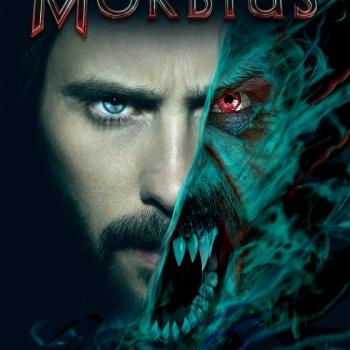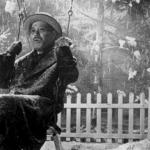Review of Much Ado About Nothing, Directed by Joss Whedon
As a longtime fan of both Joss Whedon and Shakespeare’s Much Ado About Nothing (most notably the 1993 film starring Emma Thompson and Kenneth Branagh), I was delighted to hear that the genius behind Mutant Enemy would be producing his very own adaptation of this beloved play. The history of the film only adds to the charm: After years of hosting Shakespeare readings at his home, Whedon finally decided to try his hand at filming the Bard. In October of 2011, a handpicked assortment of Whedon’s own established stable of actors gathered at the Whedon estate for a whirlwind 12-day shoot. It is clearly a labor of love. And for a Whedonverse devotee, there’s a particular sort of joy in seeing familiar faces onscreen. This picture boasts such alums as: Amy Acker (Angel, Dollhouse, The Cabin in the Woods), Alexis Denisof (Buffy the Vampire Slayer, Angel), Reed Diamond (Dollhouse), Fran Kranz (Dollhouse, The Cabin in the Woods), Clark Gregg (The Avengers, Agents of SHIELD), Nathan Fillian (Firefly, Dr. Horrible’s Sing-Along Blog), Sean Maher (Firefly), and Tom Lenk (Buffy the Vampire Slayer, The Cabin in the Woods). Be still my ever-lovin’ heart. 
Sadly, all this potential never really paid off. Don’t get me wrong—I still enjoyed the movie. But Much Ado has been done, and done well; even after 20 years, it can be a challenge to break out from under the shadow of Branagh’s and Thompson’s stellar performances. Alexis Denisof isn’t really up to the role of Benedick—for some reason, he plays the animated and quick-witted ‘jester’ as rather sullen and withdrawn. Despite Whedon’s decision to open the film with a flashback to Benedick and Beatrice’s one-night stand, Denisof displays no affection for his lady whatsoever, no enjoyment of their banter. As a result, his sudden transformation into a besotted and giddy Romeo is quite jarring and ultimately unconvincing. Furthermore, despite his Yankee roots, Denisof always sounds like he’s struggling to mimic the American accent—over-pronounced ‘r’s litter his performance. Perhaps my opinion is colored by his breakout performance as prissy Wesley Wyndam-Pryce, but I think he’s better as a Brit.
Fortunately, the character of Beatrice fares better in Amy Acker’s capable hands. She plays the role with a faint undercurrent of wistful sadness, rather than the almost manic vitality displayed by Emma Thompson in the 1993 adaptation. Still, Acker delivers her many zingers with energy and emotion, and the more somber nuances lay the groundwork for her eventual change of heart. We believe that she cares for Benedick, even as she torments him; the harsh edges are the result of bitterness born of disappointed love, not utter indifference or malice. Acker also seemed to be among the most comfortable with the Shakespearean language—she said it like she meant it, and her emotions rang true. It’s a pity she didn’t have a better leading man to work with.
It’s always a pleasure to see Fran Kranz onscreen in any capacity, and he does not disappoint here—his portrayal of the lovesick (and, as it turns out, extremely gullible) Claudio, though not quite as starry-eyed as Robert Sean Leonard before him, is more passionate than I would have expected. Among the rest of the cast, standouts included the classically trained Reed Diamond as Don Pedro (the Prince, previously played by Denzel Washington); Clark Gregg as Leonato; and Nathan Fillian and Tom Lenk as Dogberry and Verges (Michael Keaton‘s memorable role). Unfortunately, Sean Maher, as the nefarious Don John, never really got to twirl his metaphorical mustache, but he certainly has plenty of villainous potential.
In the ‘Making Of’ featurette, Whedon explains that he sees Much Ado as, essentially, a dark noir story, which makes the black-and-white film choice all the more appropriate. However, with all due respect to Mr. Whedon (and I do respect him deeply and have greatly enjoyed his previous productions), I think he’s dead wrong. Much Ado is, at its heart, a lighthearted romp. It is a classic comedy, full of humor and good cheer from start to finish: from Beatrice and Benedick’s zippy one-liners, to the farcical plot by their friends to entangle them romantically, to Dogberry’s mind-boggling incompetence, it is just fun. The worst thing that happens is a couple of misunderstandings, each of which is cleared up in a matter of hours. Yes, those misunderstandings lead to some heart-wrenching scenes, and very nearly have fatal consequences for those involved, but in the end it all works out. The villain runs off and is apprehended off-screen, and everyone lives happily ever after. Everyone is essentially good and likable except the malevolent (and ultimately ineffective) Don John and his henchmen. That’s … not really noir. At all. Sure, Beatrice is a bit jaded, but all it takes is a well-placed bit of (false) gossip about her Benedick, and she’s head over heels.
This fundamental mischaracterization of Much Ado explains a lot of the stylistic and directorial choices that limited the film’s otherwise astounding potential, most notably Denisof’s rather mystifying portrayal of life-of-the-party Benedick as a rather crotchety wet blanket. Then, too, the apparently gorgeous Whedon homestead very nearly disappears into grayness—the interior shots and the characters themselves are lovely in black-and-white, but the exterior and landscaping are just so much visual mush. Such a pity, particularly as those involved wax poetic about the beautiful surroundings. The whole thing is very understated, in a way that I don’t think Much Ado was ever intended to be. The play is essentially a nonstop celebration—first, the joyful welcoming of the victorious prince and his heroic friends, then immediately the announcement of an impending wedding (with all the preparatory festivities), then the ceremony itself gone horribly awry, a short and tragic (or seemingly tragic) funeral procession, and then weddings for everyone! This is a parade of parties (and I don’t mean the ‘small, intimate dinner’ variety that Whedon apparently had in mind).
I’ve spent the bulk of this review talking about the movie as a movie—and with good reason. I’m not sure there’s all that much here in the way of gospel themes. True, Don John is a nice little picture of Satan—ultimately powerless to inflict real harm on those he hates, he instead devotes himself to exploiting what limited evil he can devise. His schemes can’t really benefit him in any meaningful way, but then, he doesn’t have to win; it is enough for him that others suffer. Like Satan, the evil he works, though limited in power, still has the capacity to cause pain and suffering for those around him. Fortunately, his final defeat, though delayed, will be swift and, all things considered, anticlimactic. And I suppose there’s a few other nice little lessons tucked away in the story, about the dangers of jumping to conclusions, how not to respond to sin in others, and even death as a necessary consequence of sin (followed by rebirth into a new life of purity and fidelity). And the final wedding scenes certainly remind us of our own ultimate—and felicitous—destiny.
But really, it’s just a fun, aptly titled play, adapted (this time) into a slightly less-fun movie. Fans of Joss Whedon—and his alums—will undoubtedly want to check it out. But if you loved the 1993 version as much as I did, be warned: This movie will bring on a powerful craving for that brighter, better film.
_______________________________________________________________
Alexis Neal regularly reviews young adult literature at www.childrensbooksandreviews.com and everything else at quantum-meruit.blogspot.com.
Like Joss Whedon? Check out our review of The Cabin in the Woods.












